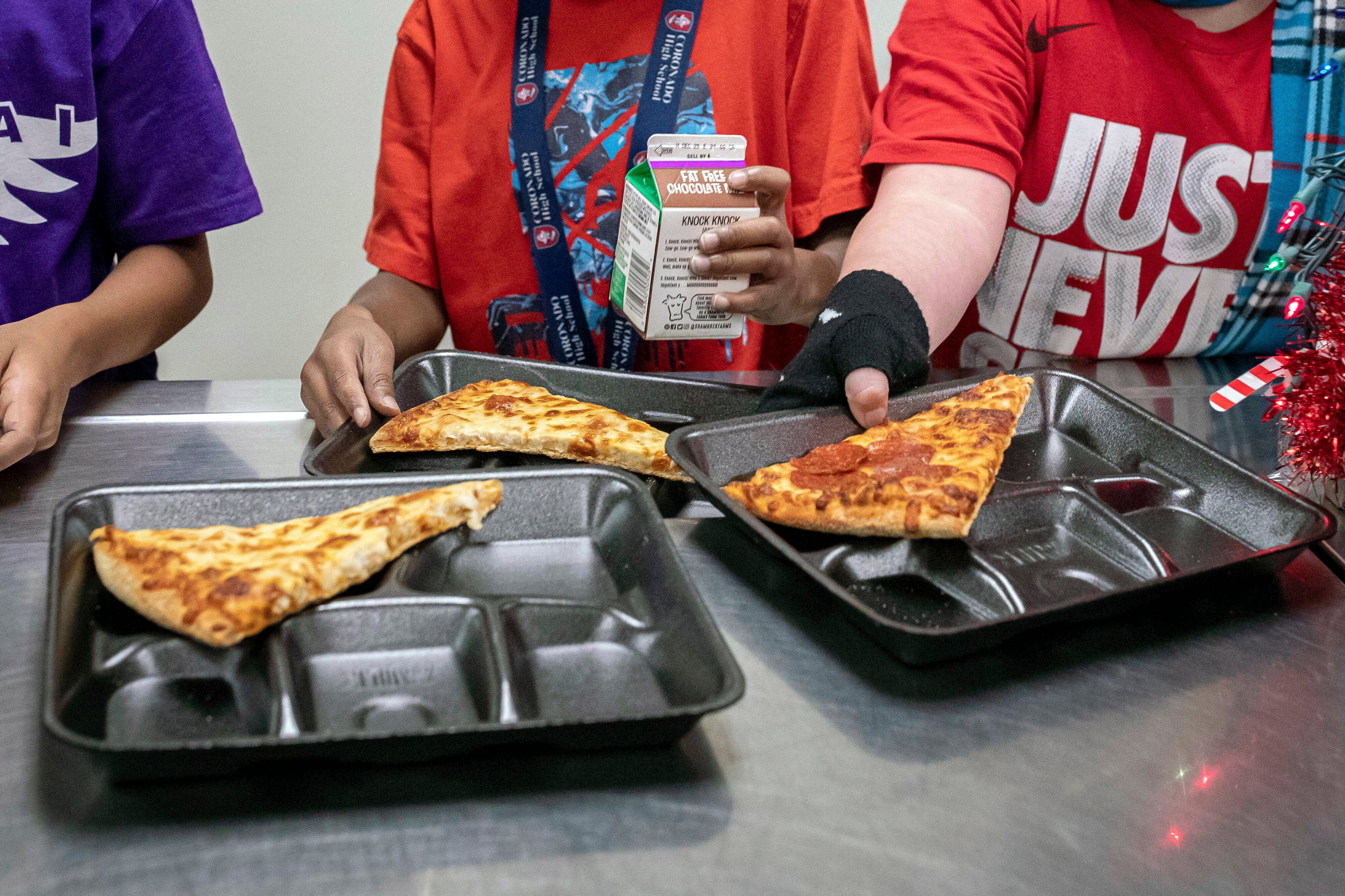More students gain eligibility for free school meals under expanded US program
More students in schools serving low-income communities will be eligible to receive breakfast and lunch at no cost under a rule change announced Tuesday by the U.S. Department of Agriculture

Your support helps us to tell the story
From reproductive rights to climate change to Big Tech, The Independent is on the ground when the story is developing. Whether it's investigating the financials of Elon Musk's pro-Trump PAC or producing our latest documentary, 'The A Word', which shines a light on the American women fighting for reproductive rights, we know how important it is to parse out the facts from the messaging.
At such a critical moment in US history, we need reporters on the ground. Your donation allows us to keep sending journalists to speak to both sides of the story.
The Independent is trusted by Americans across the entire political spectrum. And unlike many other quality news outlets, we choose not to lock Americans out of our reporting and analysis with paywalls. We believe quality journalism should be available to everyone, paid for by those who can afford it.
Your support makes all the difference.Millions of additional students in schools serving low-income communities will be eligible to receive breakfast and lunch at no cost under a rule change announced Tuesday by the U.S. Department of Agriculture.
At schools where 25% of families participate in income-based public benefits, such as the Supplemental Nutritional Assistance Program, the federal government now will cover the cost of free meals for all enrolled students. Previously, the qualifying threshold was 40%.
Roughly 3,000 additional school districts serving more than 5 million students will now be eligible, officials said.
“While there is still more work ahead to ensure every K-12 student in the nation can access healthy school meals at no cost, this is a significant step on the pathway toward that goal,” said Stacy Dean, USDA deputy under secretary for Food, Nutrition, and Consumer Services.
During the pandemic, Congress temporarily made universal meals free to all students, but that ended last year. Other federal programs that provided direct food assistance to families also scaled down amid soaring food prices, putting strains on family budgets and leaving some kids hungry.
Meantime, eight states — California, Colorado, Maine, Massachusetts, Michigan, Minnesota, New Mexico and Vermont — have made school meals free to all students regardless of income.
The new rule will expand access to universal meals through a program known as the Community Eligibility Provision, or CEP. Instead of requiring families to fill out individual applications for free or reduced-price meals, schools participating in the program receive federal funding based on income data, with local or state money filling in any gaps in the cost of offering meals to all students. Advocates say reducing administrative burdens like applications helps ensure children don’t go hungry.
Some have criticized the costs of the program. The Republican Study Committee has called for eliminating the CEP altogether, arguing it ignores the individual income eligibility of each student.
Nationally, expanding a community-based model of universal meals would alleviate burdens on many families, said Anna Korsen, policy and program director at Full Plates Full Potential, a nonprofit organization in Maine that works on maximizing access to school meals.
“The federal poverty guidelines that dictate who gets a free meal and who doesn’t are really outdated,” Korsen said. “There are so many families that on paper don’t qualify for a free meal, and they can get lumped into this group of ... families that can afford to pay for lunch or breakfast at school. But really, those families are living paycheck to paycheck.”
Agriculture secretary Tom Vilsack said the rule change is a step toward fulfilling the promise of healthy school meals for all.
“Increasing access to free, healthy school breakfast and lunch will decrease childhood hunger, improve child health and student readiness, and put our nation on the path to better nutrition and wellness,” he said.
___
The Associated Press education team receives support from the Carnegie Corporation of New York. The AP is solely responsible for all content.